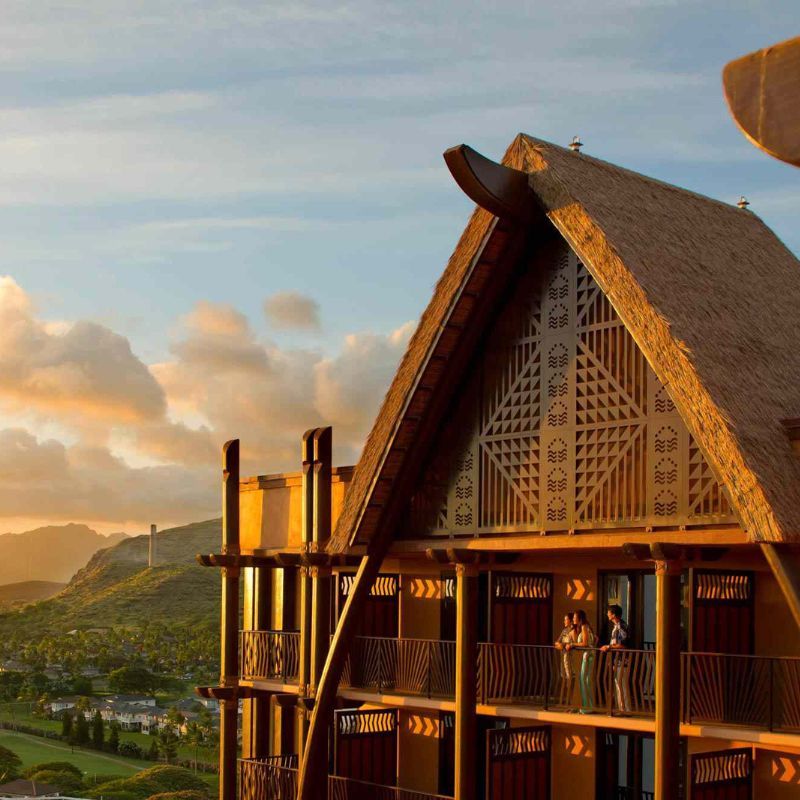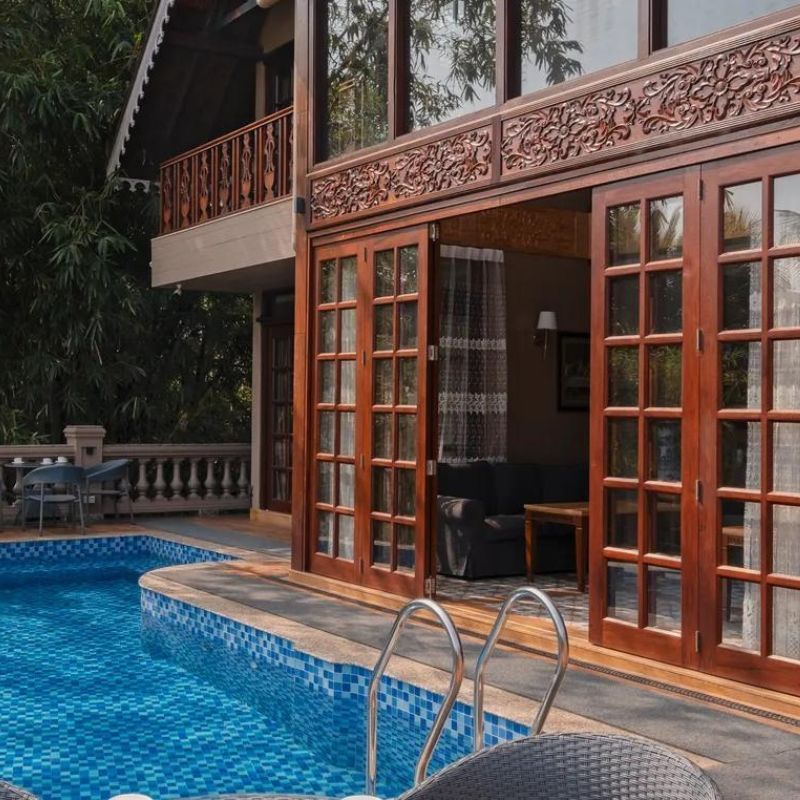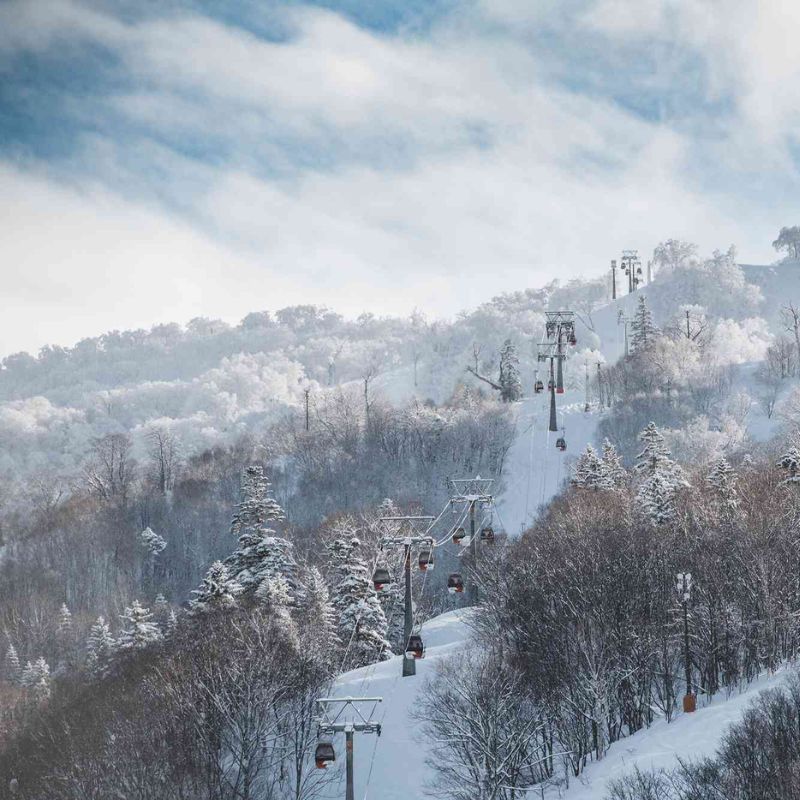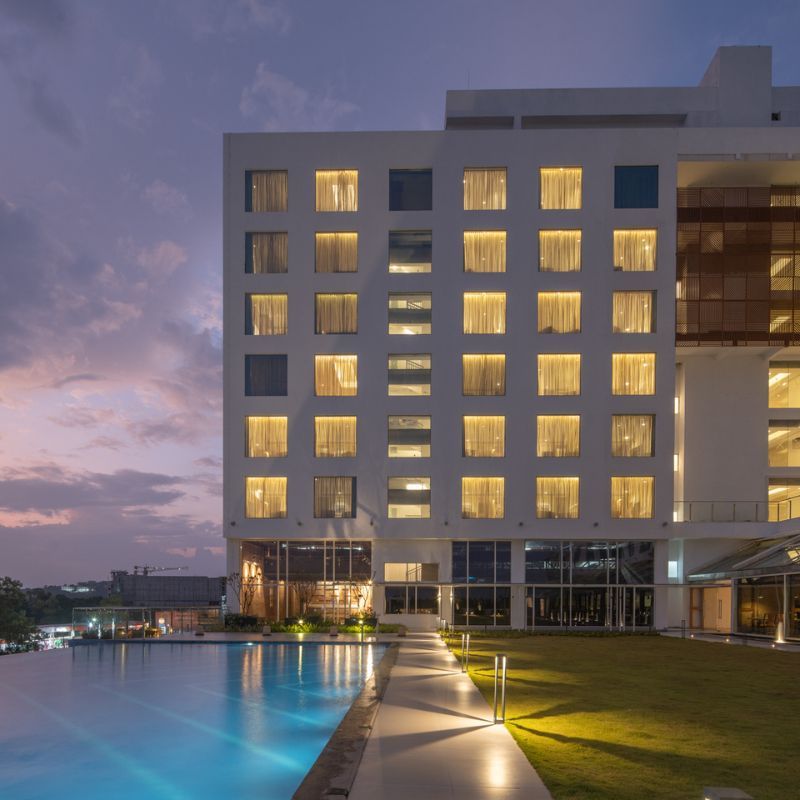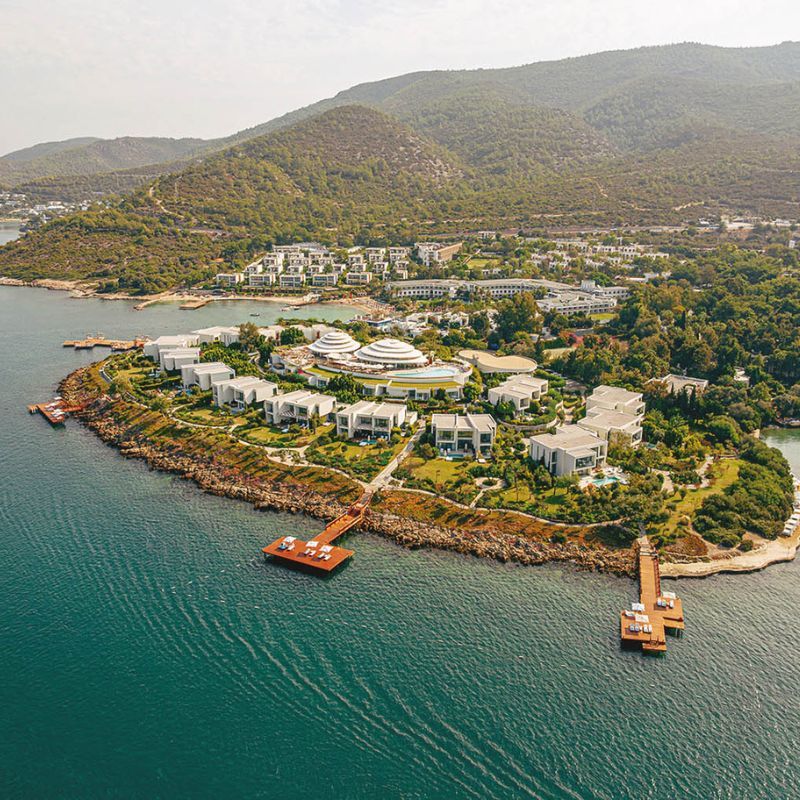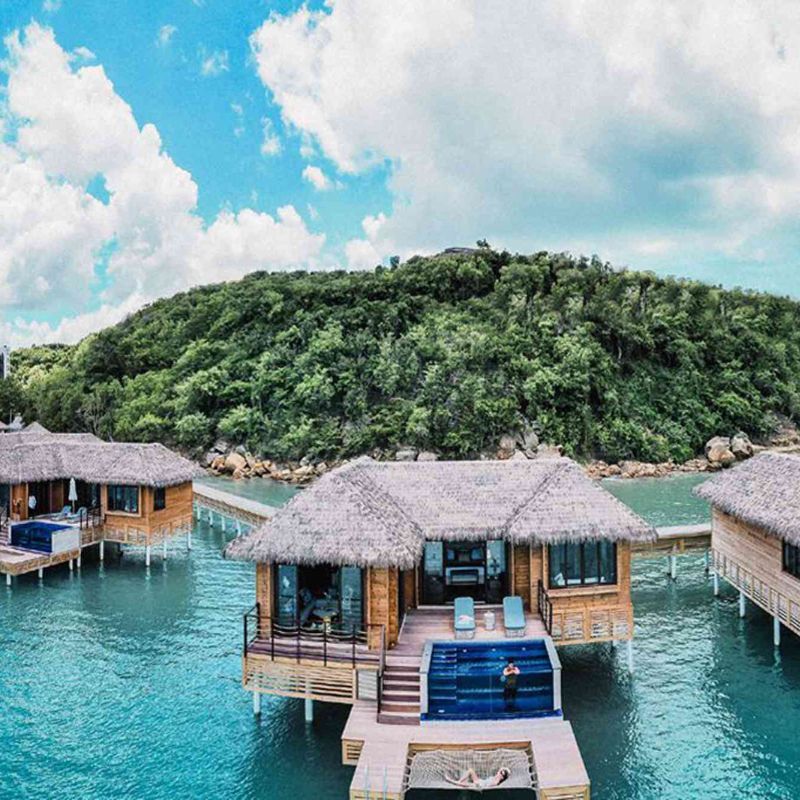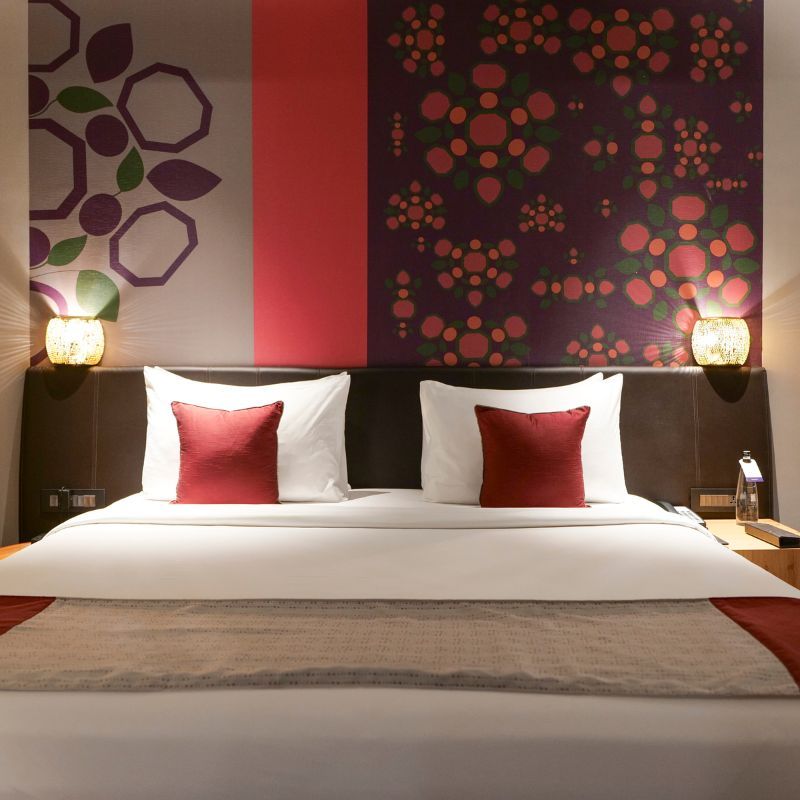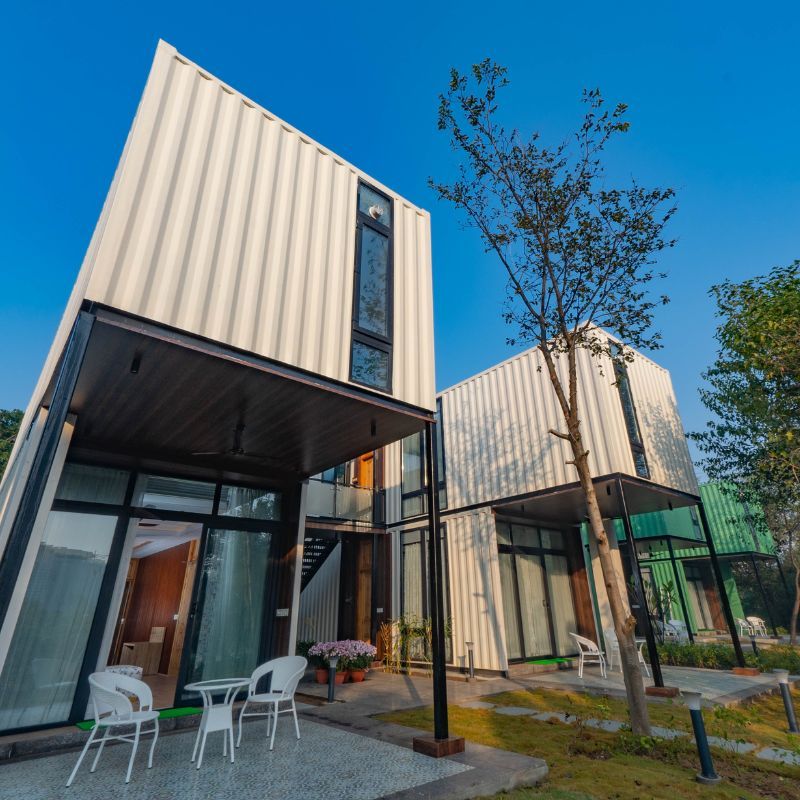
At Alila Fort Bishangarh, the new hotel just three hours from Delhi, Anwesha Sanyal explores how a resurrected fortress has stood the test of time and towered over the milieu with grandeur and humility.
If the years of travel to Rajasthan’s fort hotels have taught me anything, it is that no matter how tangible the narrative is in the beginning, one can never quite comprehend the make of a fort. Walk into one armed with centuries of history, and you will still stand dazed, wondering how it was possible to build such high walls on a hill without modern technology, and how the structure has survived time, weather, and man.
Three hours from Delhi by car or one hour from the Jaipur airport—it was easy math, and I chose the former. We drove endlessly on a peak summer afternoon in search of Bishangarh’s new crown jewel, an Alila fort property, until Gurugram’s commercial hub faded away in the rear-view mirror, leaving the scorched highway, a landscape of unfinished flyovers, and a singular unflinching mirage leading the way.
A sudden detour led us into a village, then another, and as I chanted, “We’re almost there,” in my head, I got the first glimpse of it, still a good two miles away. Fort Bishangarh towered over a village, sitting on the edge of a granite hill with the Aravallis in the background. The village road melted into the fort’s entrance; the car crawled higher and higher, right to the doorstep of Alila Fort Bishangarh.
To give you a little backstory: in 1445, Rao Shekha, the first ruler of the Shekhawati dynasty, was born to Rao Mokal Amar, the chieftain of the Amer Fort and his seventh wife, Rani Nirman. At the age of 12, Rao Shekha succeeded his father. At 16, his success in the battles of Nagarchal, Saiwar, and Multhan impressed Raja Udaikaran so much that he conferred Rao Shekha with the title of Maha Rao. His power grew considerably over the next few years until he founded Amarsar, a town where he would operate out of, and where he’d later built the Shikhagarh Fort. Fort Bishangarh was built much later, by his successors, as the first line of defense against northern enemies.
Until about a decade ago, the fort was in a dilapidated condition. Then, the present heir of the family, Rajendra Singh Shekhawat, partnered with Alila to restore the property and convert it into a boutique hotel. Today, 59 contemporary rooms and suites occupy eight floors of the fort and surround a magnificent central courtyard. Large bay windows in the suites look out to the Aravallis flanking three sides of the sleepy little village of Bishangarh. The wind carries faint village sounds up to the fortress, and down below, the Havelli (the arrival tent of the hotel) patiently waits for its incoming guests. Inside the suite and out, a confluence of Rajput and Mughal aesthetic adorns the window sills, the door knockers, and the walls; in the corridors, paintings and photographs reflect the spirit of the village the hotel wants to embody.
As a young history student, I always associated fortresses with secret passages. In a first, this fantasy was realised here. The fort was furnished with three elevators, each accessible from a different part of the floor and hidden from plain sight, and not all taking you to every floor. This became a fabulous opportunity to sneak around and blame the elevators for being an intruder, tiptoeing around empty, dim-lit corridors and through doors that led you practically nowhere. On one occasion, I snuck up a narrow staircase that looked like it would bring me to a clearing outside the fort, only to discover (most embarrassingly) that it led me further in, to a vacant room. When I turned to get back down, I found a concierge standing patiently to escort me back—he thought I had gotten lost.

Next day, I traded the fort exploration for some botany lessons. At 7 am, Chef Lokendra Singh Shekhawat arrived for a tour of the hotel’s organic garden. This was no ‘garden’, I found out a short while later, but a farm! Here, they grew every vegetable and herb that could possibly be produced in the area. The two restaurants—Amarsar and Nazrana—followed their farm-to-table philosophy diligently by sourcing their produce from here. Tomatoes were blush red, pumpkin flowers assumed a bright yellow hue, shiny purple eggplants had been picked for the kitchen already, and bottle gourds sparkled from being watered recently. For the next hour, the botanist, his assistant, and I tiptoed between rows of plants, picking vegetables and collecting herbs for a meal the Chef would later make at Amarsar.
In the days that followed, Amarsar became my go-to restaurant for breakfast and lunch. This fine diner was inspired by the town Maha Rao founded and which, according to folklore, saw a 12-year-long battle with the Gaurs. Drawing heavily from the reputation of the Shekhawati Rajputs, the restaurant imparted fine hospitality with a handcrafted menu that brought together world cuisines and an impregnably large Rajasthani thali (read: seven distinct recipes served with bajre ki roti and a copious amount of butter milk).
If you think that isn’t enough to satiate your culinary exploration urges, you can ask the concierge to take you to Daya’s kitchen. That afternoon, we arrived at Daya’s quaint rural house, sleeves up and ready for a village experience. We found out a little later that we’d hardly be able to keep up if we followed her routine. Daya was a young, busy homemaker and farmer.
At 5 am, she’d join the men of the house at their farm and work till mid-day. Afterwards, she’d cook for the family, milk the cows, and take care of her kids. When guests from Alila requested a meal, she happily obliged. This intimate rural setting of Daya’s house gave you pause as you watched her cook and, if you wish so, helped her make rotis with pearl millet. It’s an incredibly humbling experience when you make the shift from the massive fort to the simple longings of Daya’s house.

It was clear that the fortress sought Bishangarh out in more ways than one, and in doing so, brought the village into itself. The bar that offered a fine selection of spirits was christened after Madhuveni (sweet steam), the river that once flowed around the fort. Nazrana, meaning ‘view,’ became the rooftop restaurant that offered a magnificent view of the surrounding area, and harked back to the time when this vantage point was crucial to the security of the fortress. A little part of me was left behind too, wandering around the corridors in search of doors that would lead somewhere.
GETTING THERE
If you’re travelling from Delhi, you’ll reach Bishangarh in 3½ hours by car. From all other major cities, take a direct flight to Jaipur and request an airport transfer to Alila Fort Bishangarh.
STAY
Book a Grand Suite located at one of the topmost levels of the fort for a dramatic view of Bishangarh.The suite is suitable for two adults and a child, and comes furnished with a living space, a king-sized bed, and a large bathtub for two. Doubles from INR 11,000 per night.

DINING
The fort boasts two extraordinary restaurants; Amarsar that offers world cuisines, and Nazrana, a rooftop restaurant that takes you back to the roots with local delicacies. On a special occasion, request a lavish, personalised spread at one of the fort’s unique locations—the spa garden, Havelli Terrace, or Kachhawa Deck—or a Braai to bond with the family over barbecued meats by the poolside.

VISIT
Alila Fort Bishangarh offers curated itineraries for culinary, adventure, and artisanal enthusiasts. In three nights and four days, you can easily cover:
Daya’s Kitchen
Visit a village house to help Daya with daily chores, cook authentic dishes at the kitchen on a traditional firewood stove, milk a buffalo, and end the visit with a delicious meal cooked by her. Doubles at INR 4,000
Aravalli Biking Trail
Take a guided tour of Bishangarh on a bike early in the morning and watch the daily village life unfold at its own pace. Have tea under a tree; visit temples, farms, and fruit plantations. INR 1,000 per person
Artisanal Tour
For complete cultural immersion, see some of the exceptional workmanship of the village folk. Meet local carpet weavers who spend more than 12 hours on the loom; visit a local potter and make your own pots; learn the legacy of a third-generation jeweller. Doubles from INR 3,000
Camping Trip
For kids, Alila offers a special, half-day camping trip where they are taken to a spot near the fort to set up their camps, participate in outdoor activities, and enjoy sumptuous picnic lunches.



